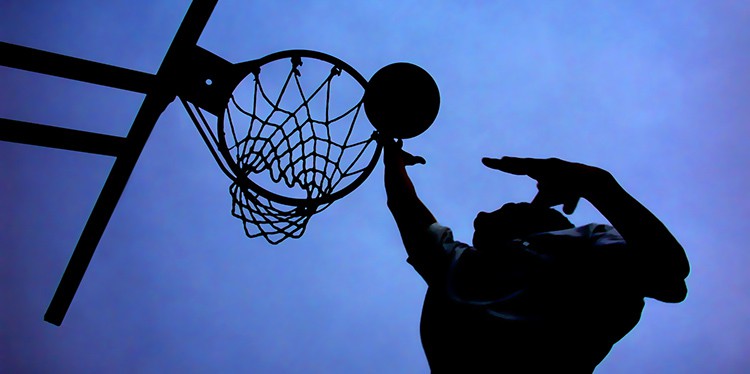Getting a grip on jammed fingers

Athletic or not, most of us have experienced the misfortune of a jammed finger injury – which is actually a finger sprain. Casually walking past a dining room chair, opening a car door or even gardening can be the everyday activity that puts your finger at risk.
Jammed fingers are a frequent injury for many sports – but especially for basketball when the ball hits the tip of the finger and pushes it back toward the hand. It’s not often serious but pain and swelling can affect one or more of the joints and cause discomfort.
“The knuckles, or joints, of our fingers each have ligaments that help provide stability,” explains orthopedic surgeon Jacqueline Geissler, MD. “If the fingertip takes the full impact of an object, it can sprain these ligaments. A sprained – or jammed finger can be quite painful and can be hard to move initially but usually gets better.”
These types of injuries can be very difficult to avoid because they happen so fast. Following good technique for ball handling, passing, and maintaining focus during play could minimize the risk of injury.
Treatment
Dr. Geissler advises that most of the time when there’s a sprain, all that’s needed is to remember the RICE acronym: Rest, Ice, Compression, and Elevation.
“For jammed fingers or sprains, this means resting or avoiding further injury, icing the swollen area, buddy-taping the finger to the adjacent finger with medial tape, and elevating the hand. Often it’s helpful to continue the buddy taping after you return to your sport to add additional protection for the finger. It’s important to start moving the finger as you feel better to avoid excess stiffness.”
When to see a doctor
Sometimes it may be more serious than a jammed finger. While some mild soreness and swelling can persist for a long time, the intense pain should resolve very quickly and the motion should return within a day or two and you should be able to resume your normal activities.
“If your finger doesn’t bend properly, appears dislocated or crooked, or the pain is intense, this may be a sign of a fracture or dislocation of the finger joint,” said Dr. Geissler. “These more serious injuries require prompt diagnosis – within one to seven days – and treatment for the best outcome.”
Dr. Geissler specializes in upper extremity fracture care, arthritis, reconstructive surgery, elbow trauma, carpal tunnel, and peripheral nerve injury at Hennepin Healthcare. She is also skilled in general orthopedic trauma care. For more information about orthopedic services at Hennepin Healthcare, go to hennepinhealthcare.org/orthopedics.

